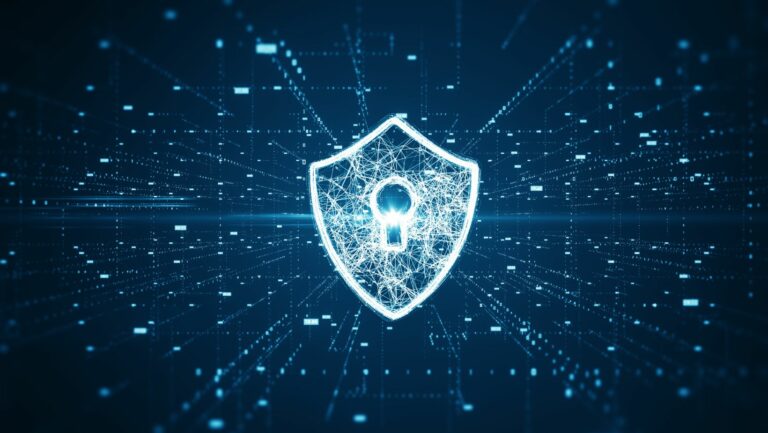Invenergy Found Unauthorised Activity on Some of Its Systems
Invenergy is a leading clean energy company that focuses on developing, constructing and operating clean energy projects across North America, Europe and Asia. Invenergy offers a wide range of services from commercial and industrial clients to municipalities and government entities. Recently, Invenergy discovered unauthorised activity on some of its systems, creating a potential security breach. This article will provide an overview of Invenergy and outline the implications of the unauthorised activity.
History of Invenergy
Invenergy LLC is a leading privately-held global energy company offering sustainable, clean energy solutions. Founded in 2001 and headquartered in Chicago, Invenergy has developed over 25,000 megawatts of projects contracted, operating or under construction in the United States, Canada and Europe. The company has established a strong track record of successfully developing, constructing and acquiring quality projects with strong sponsorships nationwide. With experience in 30 different markets throughout North America and Europe, Invenergy works with customers across their businesses to identify opportunities to benefit from distributed energy resources.
In addition to its project development efforts, Invenergy also acquires interests in projects across the country that align with its strategic objectives. This provides a comprehensive portfolio of services for customers looking for full service investment advice on everything from acquisition assessments to long-term operation strategies. In 2020, Invenergy identified an unauthorised activity within its internal network – fortunately no customer data was affected – that led to a suspension of some IT services until security measures were implemented. An internal investigation was conducted into the root cause of the breach. Following an extensive assessment by third-party cyber security experts who confirmed the safety and security of projects currently operated by Invenergy, the company resumed its IT services for all existing operations activities. Further, it strengthened the security of all customer related assets on future transactions or acquisitions.
Invenergy’s Operations and Services
Invenergy is a renewable energy development and management firm active in the United States, Western and Central Europe, Japan, and Australia. Invenergy specialises in providing custom solutions for the electricity industry including working with utilities, large electric customers, and public sector entities to maximise value from generation assets through sales of energy, capacity performance contracts (“CPAs”), and other services such as energy storage services. Invenergy develops, owns, operates and maintains a diverse portfolio of utility-scale renewable energy facilities such as wind farms, solar parks, natural gas-fueled electric power plants, and distributed generation assets (DG). This includes supporting development resources ranging from site selection to land control agreements; financial analysis of projects; critical project infrastructure such as access roads and transmission interconnection; general construction oversight; licensing activities; environmental regulation compliance oversight; operations & maintenance contract strategy & negotiations; connection agreements assurance & enforcement.
In addition to electricity generation & trading activities Invenergy also provides innovative services such as Virtual Power Plant (VPP) operations by integrating its firm’s distributed asset fleet operated with an AI driven platform for optimization purposes allowing customers to reduce their operational costs on a long term basis with minimum human resources involvement. VPP creates multiple opportunities throughout the energy stack in energy storage integration, microgrids implementation and Distributed Energy Resources management (DERMS).

Unauthorised Activity
Recently, Invenergy reported finding unauthorised activity on some of its systems. This type of activity can have significant implications for any company, large or small, and is a concern that must be taken seriously. Unauthorised activity can mean various things, including the potential for data to be stolen and/or compromised. In this article, we will discuss the implications of this activity to better understand the risks and how they can be addressed.
What Was The Unauthorised Activity?
Unauthorised activity is any activity committed without an individual or organisation’s knowledge, approval, or authority. In many cases, unauthorised activity can result in damages, significant losses, and consequences for those involved. In addition, several types of unauthorised activities can be damaging and may require action from organisations to protect their safety and security.
Types of Unauthorised Activity
The most common types of unauthorised activity include fraud, theft, hacking/cyber attacking and data manipulation/misappropriation. Fraud occurs when someone deceives an individual or organisation to obtain goods or services or to gain illegal access to information they are not authorised to access. Fraudulent activities could include identity theft and false billing.
- Theft: Theft is unauthorised taking of property without consent and usually to deprive the rightful owner of its use or benefit perpetually. Examples include shoplifting, theft and embezzlement.
- Hacking/Cyber Attacking: Hacking is a form of digital intrusion used by malicious groups to gain access to computer systems to manipulate data or gain intelligence on the system’s operations. Cyber attacking involves exploiting vulnerabilities in a network’s security systems by using specially designed programs known as malware which can spread viruses and damage data stored on systems worldwide.
- Data Manipulation/Misappropriation: Data manipulation involves changing data without authorization while misappropriation involves using confidential information without proper authorization for personal gain or corporate benefit. This type of unauthorized activity can lead to serious consequences when it comes to breach of privacy laws and regulations if exercised with malicious intent or negligence.
How Did it Happen?
Unauthorised activity can occur in various forms and result from either internal or external threats. Therefore, measuring these risks against the associated damages is important to determine the best action. Internally, unauthorised activity may be as simple as a mistake by an employee or a breach of an internal company policy, leading to data theft, service disruption or misuse of resources. In addition, increased access privileges for employees to expedite workflow processes could lead to unauthorised activity without considering security implications.
Externally, cyber threats come in many forms and could lead to data breaches or malicious software (malware) installed on company devices. Malware, designed to deploy ransomware or access company resources frequently goes undetected until there has been some damage. Attackers might also attempt social engineering by leveraging trust relationships with employees such as phishing emails that look like they were sent from a trusted source but are malicious programs. Unauthorised access can have serious implications for your business ranging from reputational damage and financial losses due to intellectual property theft and data breaches; legal costs due to privacy violations; operations disruption due to malicious attack; compliance failures which stem from lax security protocols; and reduced customer loyalty when customers lose confidence in your business’s ability to protect their information securely. In extreme cases it could result in business closure due to the cost and complexity of remediation efforts needed for recovery.

What Was The Impact?
Unauthorised activities can have serious consequences for all parties involved, from legal implications to lost trust and confidence. Potentially, lost profits and market share are at stake. Companies who have been the victims of unauthorised activity may experience financial damage due to the fraudulent activities or negligence of involved parties. In addition, they could face fines and other related costs associated with the investigation into the incident, such as alerting customers or authorities. They may also suffer reputational damage if their customers do not find out quickly enough and spread information related to the incident on social media.
The unauthorised actors involved may also face criminal charges if it is proven that they participated maliciously. The actor(s) could be held accountable for fraud, theft, embezzlement, or other criminal charges depending on the evidence collected against them by prosecutors. Depending on the severity of their actions, they might even be jailed in some cases. Ultimately, unauthorised activities can cause serious damages that many companies cannot afford to ignore or overlook – ensuring security protocols are always followed is paramount to mitigating risk from such incidents.
Cybersecurity Implications
Invenergy recently disclosed that they had found unauthorised activity on some of their systems. This discovery raises many questions about the security of their systems and the privacy of the clients who use their services. In this section, we’ll discuss some potential cybersecurity implications of this unauthorised activity and how it could affect the safety of Invenergy’s customers, employees, and systems.
What Security Measures Should be Taken to Prevent Similar Incidents?
Cybersecurity has become an increasingly important consideration for companies of all sizes, and preventing similar incidents requires IT professionals to understand the risks associated with unauthorised activity. In addition, companies should implement mechanisms to protect confidential data and be proactive in developing new strategies, policies, and tools that protect their systems. Organisations must utilise modern security measures such as strong authentication measures, encryption of sensitive data, multi-factor identification processes, and secure network infrastructure. Additionally, access to sensitive information should be tightly controlled so that only those authorised can view it or make changes.
Organisations must also audit their systems regularly to identify potential vulnerabilities and mitigate threats as they arise. This includes conducting regular risk assessments to ensure that all areas of the system have appropriate protection in place and are compliant with regulatory requirements such as HIPAA or PCI DSS. Additionally, IT administrators should use logs and detailed analytics to monitor system events for suspicious activity and take any necessary corrective action accordingly. Finally, organisations need to stay informed on the latest cybercrime trends to adapt their security strategy accordingly. Training must also be provided to employees so they are knowledgeable about cybersafety basics such as social engineering tactics or best practices around password management. By taking these security measures seriously and engaging in a continuous cycle of monitoring and improvement activities , businesses will be better prepared for similar incidents in the future .

What Legal Implications May Arise?
The unauthorised activity of certain individuals can have serious legal repercussions. For example, depending upon the jurisdiction, activities such as malicious computer intrusion, possession and distribution of malicious software, online copyright infringement, and identity theft could be prosecutable crimes. Individuals could face criminal liability if they are found to have intentionally accessed a computer system without permission or in a manner outside of their authorised permissions. In addition, in some cases the threat of civil litigation from the victim(s) can also arise coupled with substantial damages being sought. Additionally, data obtained from unsecured networks may not be legally permissible or trusted in court proceedings without appropriate authentication or other evidentiary considerations being taken into account by both parties involved. As such, organisations need to consider their security procedures when assessing potential litigation due to cybercrime activity.
What Are The Potential Financial Consequences?
The financial implications of unauthorised activity cannot be overstated. When an attacker breaches the security of a system or network, it can result in financial losses incurred by the affected organisation and other entities involved. In addition to costs associated with restoring the security of the system or network and mitigating any damage caused by the attack, there can also be legal costs associated with defending against possible litigation and regulatory penalties. At an organisational level, decision-makers need to understand that there are financial consequences related to inadequate cybersecurity. Depending on the type of attack, there could potentially be losses such as:
- Business interruption due to operational disruption;
- Direct loss from stolen confidential data or funds from hacked accounts;
- Costs resulting from lawsuits brought forth by customers whose personal information may have been compromised; and
- Reputational damage resulting from negative publicity surrounding an attack.
Effective risk management practices are essential for keeping organisations’ networks safe from unauthorised access, mitigating cyber risk and protecting against potential financial losses. Organisations must recognize that proper cybersecurity measures can significantly reduce their vulnerability to attacks and exposure to potential financial liabilities related to unauthorised activity on their systems or networks.
Conclusion
As organisations continue to face malicious cyberattacks, companies must ensure their data and systems are secure. In the case of Invenergy, the company could identify and quickly act on the unauthorised activity on its systems by informing the necessary stakeholders and taking appropriate actions. However, it is also worth noting that the incident shows that organisations must remain vigilant with their cyber security protocols and ensure all measures are in place to stop unauthorised access to their systems.
Summary of The Implications of The Unauthorised Activity
The unauthorised activity discussed in the previous sections has several implications for those carrying out the activity and organisations attempting to combat it. For example, it may increase liability for companies that cannot identify and deter unauthorised activity in their systems. In addition, it decreases customer trust and damages brands’ reputations when customers experience breaches or poor security measures due to organisations being unprepared or uneducated on cybersecurity topics. Additionally, it can result in significant financial losses due to theft of customer data or business assets.
Organisations must proactively protect their assets by regularly assessing their risk posture and prioritising prevention technologies, such as firewalls, malware protection and encryption software. They should also use authentication methods such as two-factor authentication when accessing company data and require employees to use complex passwords with special characters when accessing company systems. Regular security training should also be conducted among all employees to ensure awareness about best practices for online security is promoted throughout the organisation. Furthermore, organisations should track all digital traffic coming into their systems to detect anomalous activities as soon as possible. By implementing these measures, businesses can actively work towards preventing unauthorised activities within their networks.
Recommendations for Preventing Similar Incidents
To reduce the chances of similar incidents in the future, it is recommended that organisations take some proactive measures:
- Organisations should ensure that authentication policies are enforced across all systems, and passwords are regularly changed.
- A regular audit should be conducted to detect unauthorised access to confidential data.
- Network access monitoring should be implemented to detect any suspicious activities.
- Organisations should analyze their policies on data handling and consider developing an Incident Response Plan which includes a set of procedures for addressing security events.
By following these best practices and incorporating a robust security strategy into the organisation’s operations, organisations can better protect their valuable resources from malicious actors looking to exploit weaknesses in security protocols or misuse sensitive data for their gain.
tags = data theft, invenergy company, renewable energey company, data breach, cyberattack, renewables developer, invenergy founder and ceo michael polsky, clean invenergy financialtimes, clean invenergy 4tbmurphy financialtimes, clean invenergy revil 4tbmurphy financialtimes, invenergy financialtimes, clean-power giant invenergy, chicago-based renewables developerencrypted data




